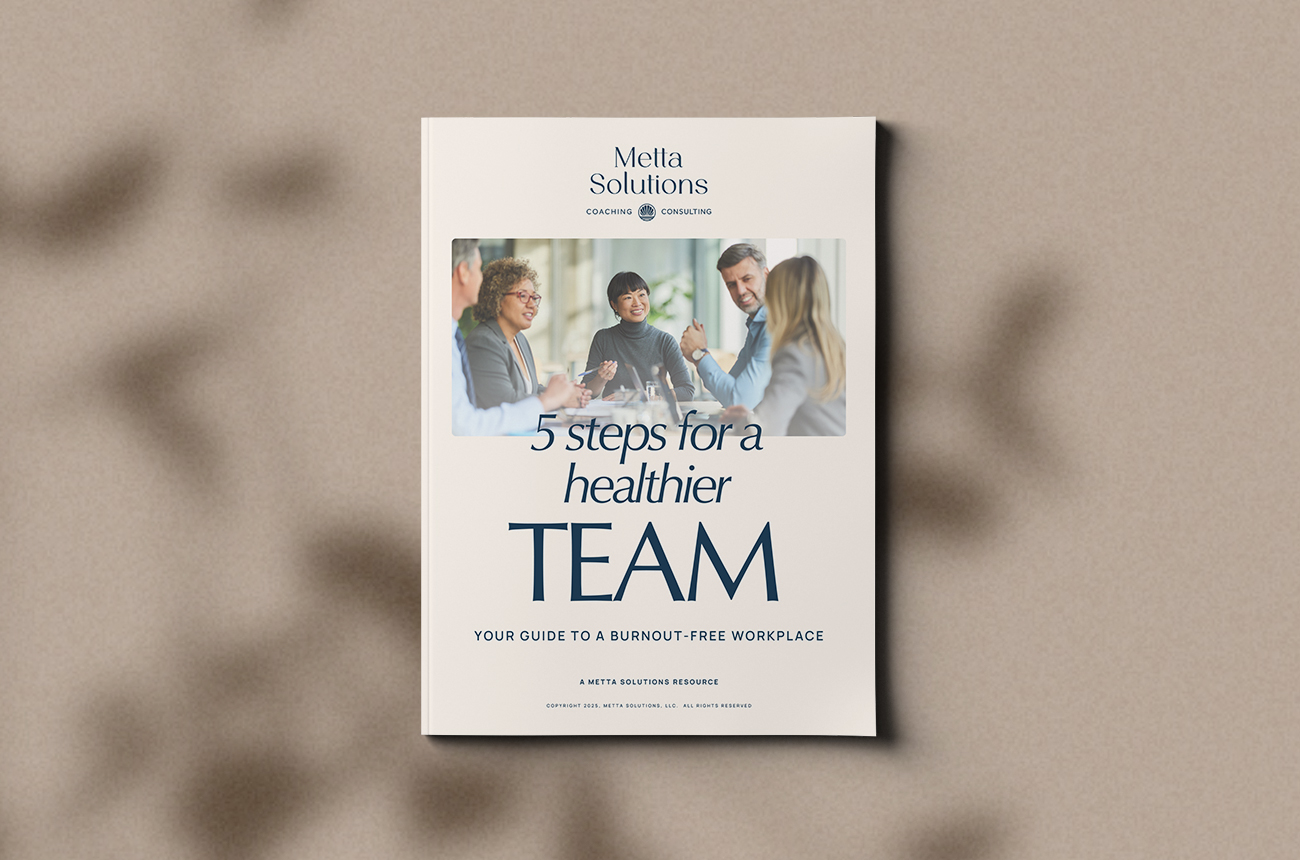







They want to get more out of work than just a paycheck. They want opportunities for growth. They want to be seen and supported. They want a culture that respects them as humans.
They want work to mean something.
And they don’t think they should have to keep sacrificing personal priorities to achieve superior professional results.
And everything people can do when they have the support they need to thrive.
Our executive coaching, consulting and training services are designed to meet the needs of professionals and organizations of all types, at any scale.

Metta Solutions is rooted in the vision of Sharon Hull, MD, MPH, PCC—a physician turned leader and coach. She has guided countless professionals in academic medicine, accounting, law, and other high-pressure industries. Through her work, they have become impactful leaders, delivering results while creating more humane and meaningful work lives for themselves and others.


Metta Solutions is now disseminating Sharon’s tools, insights and solutions at scale, with a team of hand-selected, expert executive coaches who support individual professionals as well as team and institutional leaders as they work to achieve personal alignment, professional goals and institutional success in a dynamic business environment.
Work should be — and can be — rooted in purpose and joy. We believe humans should get at least as much out of their careers as they give
We’ve seen firsthand that people who are empowered to show up at work authentically can achieve more themselves and enable those around them to do the same.
In short, what’s good for people is also good for business. We bring this mindset to our coaching of individuals, as well as our services for teams, businesses and institutions.


Coaching is a highly personal process rooted in the relationship between client and practitioner. Your experience will depend heavily on the connection you form with your coach. Use this resource to clarify your goals, ask the right questions and make the right decision.

Burnout has reached epidemic proportions in many professions, hurting employees and employers alike. Fortunately, leaders have the power to dismantle the root causes of burnout to foster healthier working environments – and better business outcomes.

We work with clients to find the right solution to meet their needs for:

We work with leaders to understand their needs and customize plans for:

Our experienced trainers can upskill individuals, teams and enterprises on topics such as:

Our free online gathering space brings together expert coaches and like-minded professionals for learning and support.

Every engagement with Metta Solutions starts with a conversation about your unique needs. Schedule a Discovery Call with one of our firm’s senior leaders today.


Stay in the loop with updates and our monthly newsletter, where you’ll find the latest resources to keep you at the top of your career and your leadership game.


Join our community of growth-focused professionals seeking meaning through intentional decision-making at work and beyond. It's free to join!
